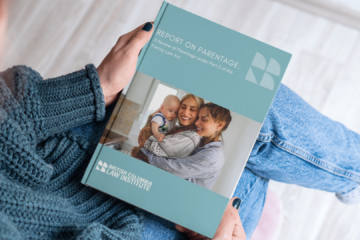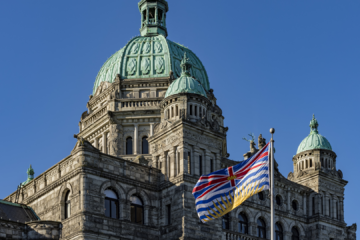BC Court of Appeal: Classification of strata lots as residential must be determined “at or around the inception of the development”
May 19, 2017
BY Kevin Zakreski
In East Barriere Resort Ltd v The Owners, Strata Plan KAS1819, 2017 BCCA 183, the Court of Appeal for British Columbia allowed an appeal from a decision of a chambers judge in a case concerning the interpretation of the expression “residential strata lots” in section 128 of the Strata Property Act. As the court of appeal put it, “the essential position of the parties can be contrasted in this way: the petitioners would look to the ‘design and intention’ in play at the time of the filing of the various strata plans in the Land Title Office (or thereabouts) creating the four phases of the Resort; the strata corporation, on the contrary, would look at that evidence but as well, the actual use of the strata lots over time.” The chambers judge held that determination of whether a strata lot may be classified as “residential” should be informed the actual use of the strata lot over time. The court of appeal rejected this approach. In its view, “the appropriate approach must be to assess the design and intention at and around the time of the inception of the development.”
The case involved a strata property developed in four phases as a resort on East Barriere Lake. Although there was some “confusion” resulting from “imprecise declarations” in the disclosure material that accompanied the development of each phase, “at the end of the day, and even assuming ‘Residential’ may mean ‘for single family dwelling’ purposes, one is left with a record that suggests that the Resort is comprised of both residential and nonresidential strata lots.” Nevertheless, the actual use of what were contemplated as nonresidential strata lots turned out to be residential.
The significance of classifying strata lots as residential or nonresidential in this case related to the amendment of the strata’s bylaws. Under section 128 (1) of the Strata Property Act, “amendments to bylaws must be approved at an annual or special general meeting,”
- in the case of a strata plan composed entirely of residential strata lots, by a resolution passed by a 3/4 vote,
- in the case of a strata plan composed entirely of nonresidential strata lots, by a resolution passed by a 3/4 vote or as otherwise provided in the bylaws, or
- in the case of a strata plan composed of both residential and nonresidential strata lots, by both a resolution passed by a 3/4 vote of the residential strata lots and a resolution passed by a 3/4 vote of the nonresidential strata lots, or as otherwise provided in the bylaws for the nonresidential strata lots.
As the court observed, the strata’s practice was to approve bylaw amendments in a manner consistent with the procedure set out in the first bullet point, which ultimately led to the dispute underlying this case:
Since 1996, the strata corporation has considered the strata plan to be composed entirely of residential strata lots and owners have voted collectively on bylaws. The bylaws do not differentiate between strata lots and no sections have been created for residential and nonresidential strata lots. [One of the petitioners] has taken issue with a number of amendments to the bylaws enacted by the strata corporation over the years. This prompted the filing of the petition. Before the chambers judge, the petitioners sought, among other things, declarations that the lots in Phases 1, 2 and 4 are not “residential strata lots,” lots in Phase 3 are “residential strata lots”; and certain bylaw amendments enacted since the filing of Phase 3 required approval by a separate three-quarter majority vote for each of the residential and nonresidential strata lots.
The chambers judge refused to grant these declarations, concluding
in the circumstances of this case, s. 128 must recognize “the intention that is manifestly apparent from the actual use over an extended period of time.” To do otherwise, he reasoned, would be to defeat the purpose of the section; namely, to protect the democratic process by allowing owners who have put their lots to different use, and thus have different interests, to have a voice in bylaw amendments.
In the court of appeal’s view, the legislation (while less than clearly expressed) compels a different conclusion:
It is to be regretted that the SPA does not put this issue beyond debate by requiring binding declarations to be made at the time of the filing of the strata plans instead of creating the uncertainty thrown up by a phrase like “designed or intended to be used primarily as a residence” in the definition of “residential strata lot.” But that is the phrase used in the legislation. To rely solely on actual use over time would be to give the words “designed or intended” no meaning. In my view, “design” and “intention” must be determined by the documents prepared and filed at and around the inception of the development. Otherwise, there would be uncertainty concerning the proper voting procedures, filing requirements, and the applicability of numerous other provisions in the SPA that rely on the definition of “residential strata lot.” Here, Disclosure Statements #1, #2 and #3 and the Re-Stated Disclosure Statement make it clear that the design and intention was for Phases 1, 2, 3 and 4 to comprise residential and nonresidential strata lots. Critically, the zoning regulations reflect this as well. I simply ask: how could it be that the design and intention of those developing and initially purchasing and using these strata lots was not to do so in conformity with the permitted uses of the lots under the applicable zoning regulations?
In my view, it is clear that this development has, since the advent of Phase 3, comprised both residential and nonresidential strata lots. The fact that the owners from time to time mistakenly proceeded on a different basis does not alter their legal position.
In the result, the court “allow[ed] the appeal and ma[d]e the declarations sought” by the petitioners regarding the invalidity of certain bylaws.












































